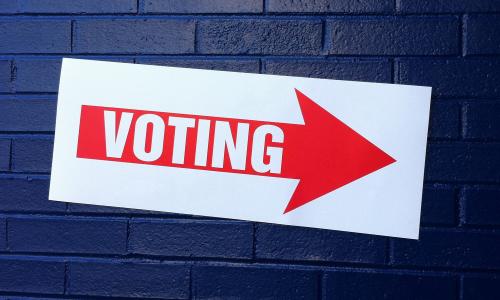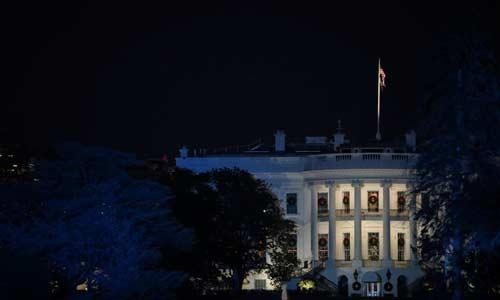NOTE: The following is one of a series of case studies produced by the Union of Concerned Scientists' Scientific Integrity Program between 2004 and 2010 to document the abuses highlighted in our 2004 report, Scientific Integrity in Policy Making.
The head of the Occupational Health and Safety Administration (OSHA) attempted to cover-up evidence of beryllium exposure among its inspectors and retaliated against a scientist who exposed the problem. OSHA also refused to provide exposure tests for the beryllium inspectors, and ignored mounting evidence of harm from occupational exposure at levels below its current standard.
Beryllium is a light metal used in nuclear reactors and weapons, computers, electronics, industrial ceramics and aerospace applications; it has a long history of occupational health problems.1 Beryllium is a human carcinogen and has long been known to cause Chronic Beryllium Disease (CBD), a painful and often fatal inflammatory disease of the lungs.2 At a 2002 meeting of OSHA officials, Administrator John L. Henshaw announced that the agency would not tell its inspectors whether they had been exposed to high levels of beryllium, and would not offer beryllium exposure screening tests, either to retired or current OSHA inspectors.3
Dr. Adam Finkel, then OSHA’s Rocky Mountain States Regional Administrator, was disturbed to hear that Henshaw had a list of inspectors who may have been exposed to high levels of beryllium, but was not planning to inform them. Concerned for the inspectors’ health, Finkel decided to tell an Inside OSHA reporter about the decision to withhold testing. When the article came out, Finkel was immediately reassigned.
Unlike most federal whistleblowers, Finkel won a whistleblower settlement from OSHA in 2003 and went on to win a lawsuit requiring OSHA to test its beryllium inspectors. The testing revealed that a surprisingly high 4% of inspectors—eleven out of the first 270 tested—were “sensitized” to beryllium, that is they had developed an immune response to the compound.4 Sensitization is the first indication that a person has an elevated risk to develop CBD. OSHA’s own website advises that people who are sensitized should avoid further exposure to beryllium.5
In 2007 Finkel won another suit, this time requiring OSHA to release to the public its database of inspectors’ tests.6 “My case was not really about scientific manipulation,” he said. “I wasn’t told to change my findings, because [OSHA] simply wasn’t interested in the science at all.”7
The current OSHA beryllium workplace standard is two micrograms per cubic meter of air (2 μg/m3) for an eight-hour work shift. The standard was worked out in the back of a taxicab in 1948 by two Atomic Energy Commission scientists who were concerned about the health of workers in the nation’s weapons programs.8 Over time, studies showed that that workers were developing CBD at lower exposure levels, indicating that the beryllium safety standard was set too high. Other federal agencies, such as the Department of Energy and the National Institute of Occupational Safety and Health, have recommended exposure limits that are, respectively, 10 to 40 times stronger than OSHA’s standard.9,10
Brush Wellman, the largest producer of beryllium in the United States, has long lobbied against stronger workplace standards. The company contracted with the public relations firm Hill and Knowlton to highlight uncertainty and sow doubt about scientific studies linking beryllium exposure to health problems.11,12
Despite the mounting scientific evidence, Henshaw turned down a 2001 petition to tighten the standard. In doing so, OSHA cited “data gaps” on how many workers were exposed and on the reliability of a screening test.13 Furthermore, OSHA accepted editing input and held a conference call with Brush Wellman prior to issuing a separate 2002 bulletin for dental lab workers (who may be exposed when, for instance, sanding beryllium-containing dental ceramics). Many of Brush Wellman’s suggestions made it into the bulletin, including language that cast doubt on the effectiveness of the screening tests used to detect beryllium sensitization.
OSHA epidemiologist Peter Infante, who resigned shortly after the dental workers’ beryllium bulletin was issued, said the bulletin had pushed him into retirement. “You have to fight and beat your head against the wall just to maintain the scientific integrity of the document,” Infante said.14
1. Roe. S. 1999. Deadly Alliance: How government and industry chose weapons over workers. Toledo Blade, March 28.
2. National Research Council (NRC), Board on Environmental Studies and Toxicology. 2007. Health Effects of Beryllium Exposure: A Literature Review. National Academies Press: Washington, DC.
3. Finkel, A. 2008. Interview with the Government Accountability Project (GAP).
4. Ibid.
5. Occupational Safety and Health Administration (OSHA). Beryllium and Chronic Beryllium Disease.
6. Monforton, C. 2007. Finkel wins FOIA case for OSHA data. The Pump Handle, July 3.
7. Finkel interview, 2008.
8. Michaels, D. 2007. Is OSHA working for working people? Testimony before the U.S. Senate Committee on Health, Education, Labor & Pensions, Subcommittee on Employment & Workplace Safety, April 26.
9. U.S. Department of Energy (DOE). 1999. Chronic Beryllium Disease Prevention Program, Final Rule. Federal Register, December 8.
10. National Institute for Occupational Safety and Health (NIOSH). 2005. NIOSH Pocket Guide to Hazardous Chemicals (Beryllium & Beryllium compounds). September.
11. Michaels, D. and Monforton, C. 2008. Beryllium’s public relations problem: Protecting workers when there is no safe exposure level. Public Health Reports, Vol. 123 (Jan-Feb): 79-88.
12. Allen, A. 2008. Manufactured doubt fends off regulation. Washington Independent, February 24.
13. Goldstein, A. 2004. Administration lags on beryllium standard. Washington Post, August 15.
14. Ibid.




